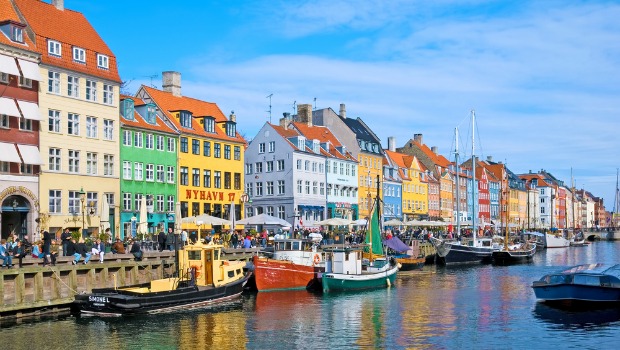Great Danes
Denmark is consistently ranked in the top of international happiness studies. A strong civil society, good work-life balance and a high level of social security (such as free health care and generous unemployment benefits) are often cited as reasons for its extraordinary happiness.Official language: DanishLife expectancy: 79.09 yearsHappiness claim to fame: Ranked No. 1 in the “World Happiness Report”What is happiness? It depends on who you ask, of course, but the Danes seem to have it figured out. According to yearly worldwide surveys dating to the mid-1970s, Denmark is consistently voted the happiest country in the world.It makes sense. This is the country that invented Legos. Its icon is a little mermaid. There’s even a pastry named after them. But breakfast goodies aside, Denmark’s penchant for happiness is rooted in its societal and political structure. The country has one of the highest income tax rates in the world, but this ensures a “cradle-to-grave safety net,” as The New York Times described it.Denmark’s key happiness variables are both quantifiable (free health care and university education) and less so—inherent trust in others. It’s not uncommon for doors to remain unlocked, particularly amid the quietly grazing cows of the countryside. There’s another important factor to happiness: health. PiaNorup Eriksen is a doctor, the health director at Kurhotel Skodborg, a wellness retreat and spa hotel north of Copenhagen, and the founder of My Life, a unique consulting company that works with professionals, exploring how health and wellbeing affects work capacity and performance.The well-being doctorFor Pia, “a healthy body and mind is a source of daily happiness,” and she practices what she preaches: She’s a certified aerobics instructor and formerly trained in triathlons at the Copenhagen Triathlon Club. Pia explains her career trajectory:“I love my education, although I am using it differently than other doctors. I have chosen preventive medicine as my specialty, and I enjoy the meaningfulness of helping people not to become sick. It’s a great intellectual challenge, but more so a psychological one, to understand the mechanisms of creating health. I think the body is a picture of our mindset.”Self-reliance and happinessOf course, a happy life is rarely just that. For many, a rosy existence directly correlates to how tough the challenges were to get there. Pia knows this well, having pursued a lifelong goal of launching her own company. Is she more or less happy than those around her? “Tough question—probably a bit of both. I have chosen a career as self-employed, which gives me freedom. Freedom is absolutely essential for my happiness. The backside of this is lots of hard work and the constant feeling of being fully responsible for everything regarding the success and failure of the company and therefore my personal finances.This can be very stressful. Especially in a country like Denmark, where very few people are self-employed and the society is simply not built to support small entrepreneurial initiatives.” That said, Pia says she fully agrees that Denmark deserves its badge for happiest country in the world. “We’re a small and very privileged country.”Nature = happinessAlso, she says, “since Danes haven’t experienced big disasters or war or likewise, we simply don’t expect it and sometimes act a bit spoiled.” Something else that may spoil the Danes? The views out the window. Sometimes happiness is rolling green hills glowing under the northern lights, with glimpses of the wild Baltic Sea beyond. How does the surrounding environment contribute to Pia’s happiness? “I live close to the ocean, which is fantastic. It means that I can walk out the door and have the ocean five minutes away, and the forest five minutes in the other direction. I truly enjoy our house. It is a log cabin which gives us the feeling of being in sync with nature.”"Start giving"In the end, Pia’s advice for a happy life is simple: “Find your life purpose, and start giving. Giving and being generous with all you have to give is a great way of becoming happier. Give attention, full presence, compliments, help, care, gifts and surprises. Giving is probably the single one thing that makes me feel happy most effectively, and that would be my advice to others.”Click here to read more about happiness around the world.
Read More









